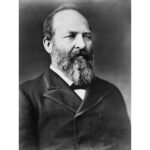In June 2012, the United States Air Force’s unmanned Boeing X-37B spaceplane completed an unprecedented 469-day orbital mission, marking a significant milestone in space exploration and technology. This mission, known as OTV-2 (Orbital Test Vehicle 2), was the second of its kind, with the first X-37B, OTV-1, having flown in 2010.
The Boeing X-37B, a reusable robotic spacecraft, was launched from Cape Canaveral Air Force Station in Florida. Despite its prolonged stay in orbit, very little was publicly known about the X-37B’s specific objectives due to the classified nature of its mission. Speculations suggested that it might be used for reconnaissance or to test new technologies for satellites.
The X-37B space plane returned to Earth, autonomously landing at Vandenberg Air Force Base in California after over a year in space. The spacecraft’s successful return showcased the effectiveness of its autonomous systems and heat shield, essential for re-entry.
The Boeing X-37B space plane represents a significant advancement in the field of reusable spacecraft technology. Its ability to spend extended periods in space and return intact opens up new possibilities for long-term, unmanned space missions. The classified nature of the mission fueled curiosity and intrigue about the capabilities and future potential of this unmanned vehicle.
Though much of the X-37B’s activities remain shrouded in secrecy, its successful orbital mission and safe return to Earth underscored the evolving capabilities of unmanned space flight technology.
References:
https://www.nbcnews.com/id/wbna47842589
https://www.space.com/31308-air-force-space-plane-200-days-orbit.html




